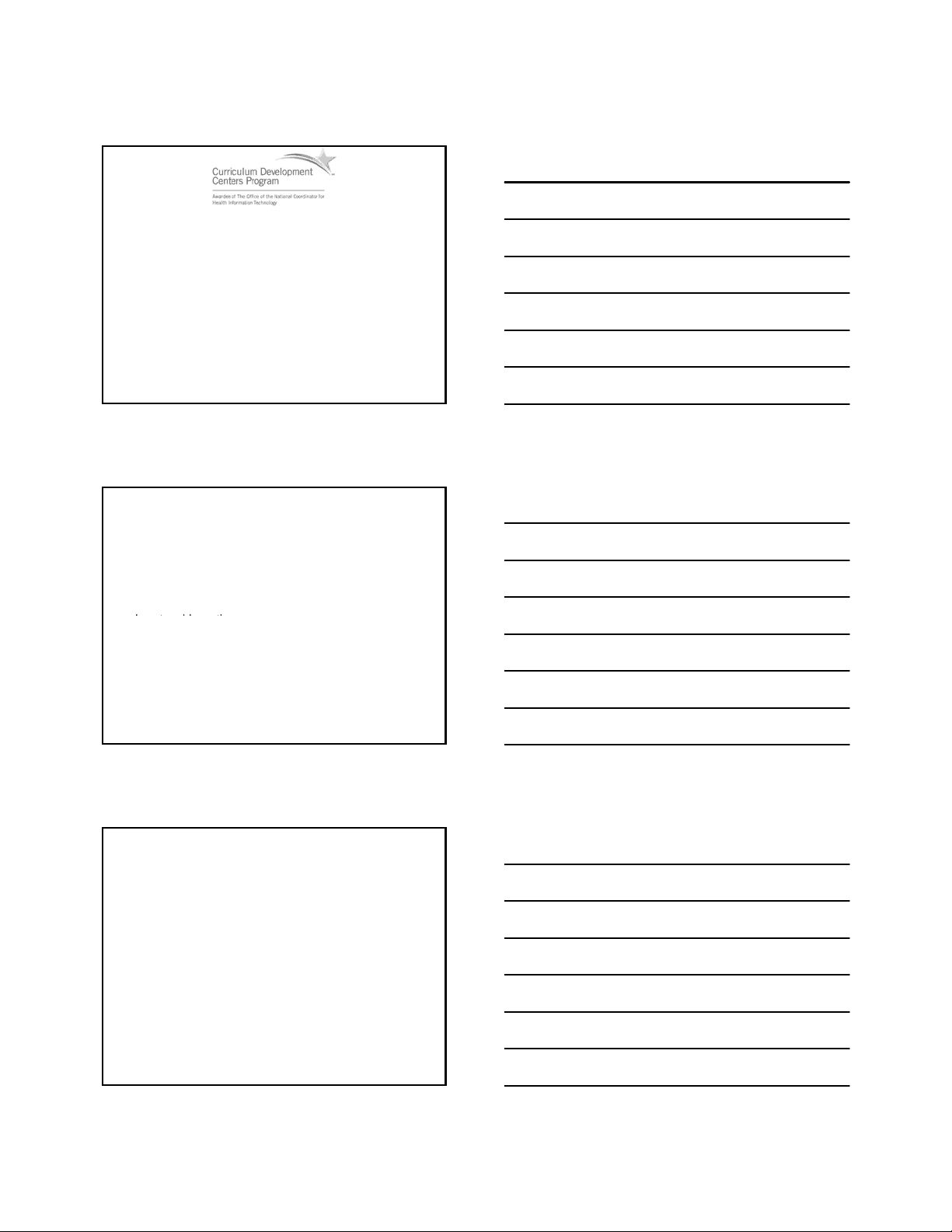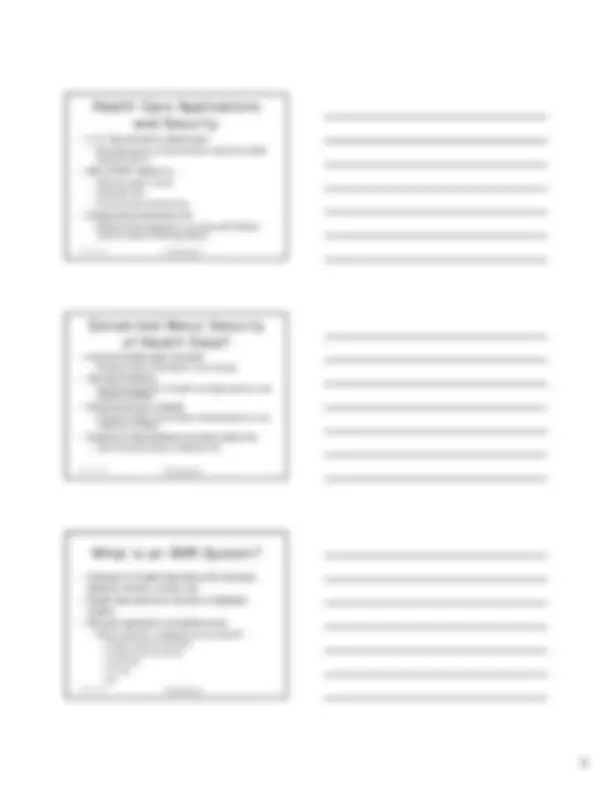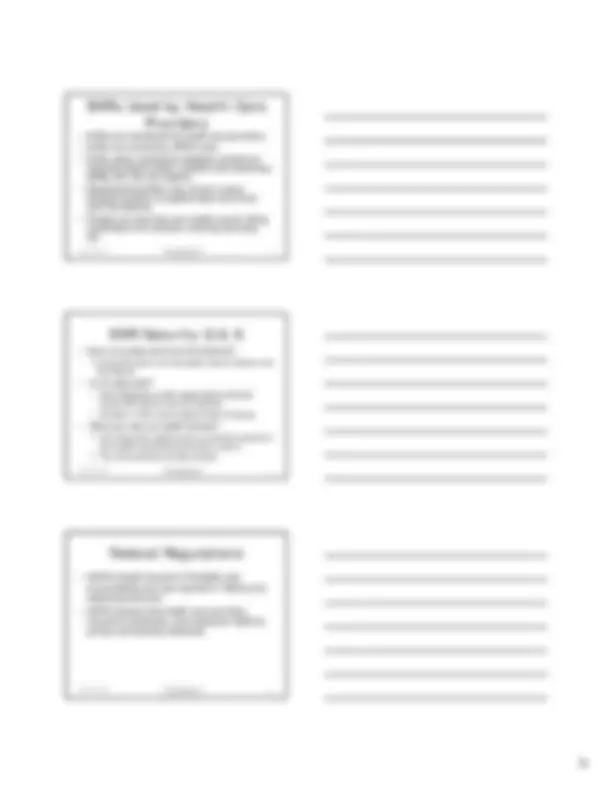





Study with the several resources on Docsity

Earn points by helping other students or get them with a premium plan


Prepare for your exams
Study with the several resources on Docsity

Earn points to download
Earn points by helping other students or get them with a premium plan
Community
Ask the community for help and clear up your study doubts
Discover the best universities in your country according to Docsity users
Free resources
Download our free guides on studying techniques, anxiety management strategies, and thesis advice from Docsity tutors
Describe security concerns for wireless networks and h t dd th how to address them. • List security concerns/regulations for health care applications.
Typology: Lecture notes
1 / 6

This page cannot be seen from the preview
Don't miss anything!




Unit 8: Security Lecture 3
This material was developed by Oregon Health & Science University, funded by the Department of Health and HumanServices, Office of the National Coordinator for Health Information Technology under Award Number IU24OC000015.
Component 4/Unit 8-3 Health IT Workforce CurriculumVersion 2.0/Spring 2011 2
Component 4/Unit 8-3 Health IT Workforce CurriculumVersion 2.0/Spring 2011 3
Component 4/Unit 8-3 Health IT Workforce CurriculumVersion 2.0/Spring 2011 4
Component 4/Unit 8-3 Health IT Workforce CurriculumVersion 2.0/Spring 2011 5
Component 4/Unit 8-3 Health IT Workforce CurriculumVersion 2.0/Spring 2011 10
Component 4/Unit 8-3 Health IT Workforce CurriculumVersion 2.0/Spring 2011 11
Component 4/Unit 8-3 Health IT Workforce CurriculumVersion 2.0/Spring 2011 12
Component 4/Unit 8-3 Health IT Workforce CurriculumVersion 2.0/Spring 2011 13
Component 4/Unit 8-3 Health IT Workforce CurriculumVersion 2.0/Spring 2011 14
Component 4/Unit 8-3 Health IT Workforce CurriculumVersion 2.0/Spring 2011 15